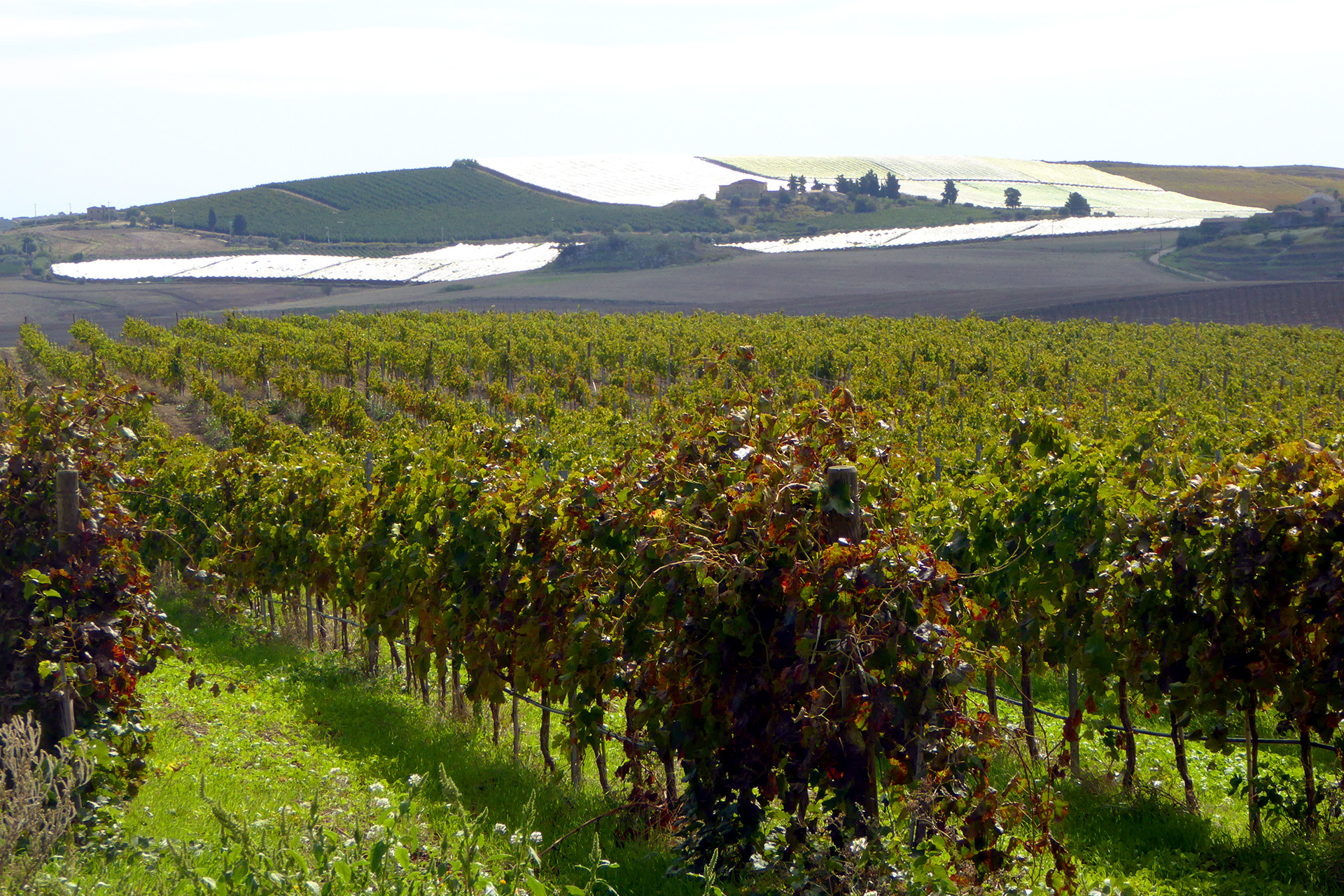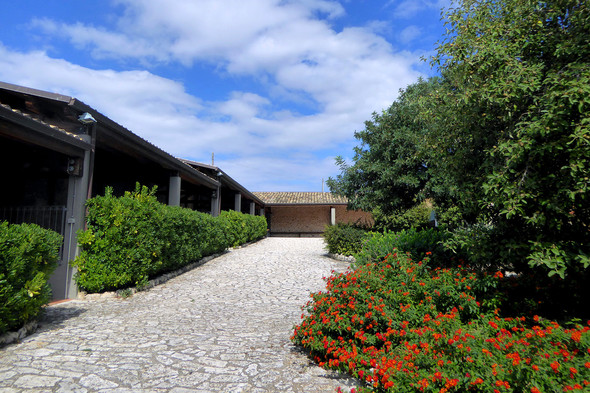The Masseria, along with its picturesque chapel, was born as a farm a century ago, when the great-grandfather of the current, fourth generation of the Cucurullo family, Francesco and Carolina, bought a large part of a prince’s estate. Originally extensive agriculture, mostly wheat, on which Sicily grew rich in the Middle Ages, the estate near Caltanisetta has now been transformed into one of fruit and vines, along with some sixty cows.
Their father, Salvatore, swam against the stream in the sixties when many were fleeing the land and fields for the economic boom in the industrial north of Italy. However, Salvatore’s love for land and agriculture, and his determination led him to plant new vineyards and peach orchards. The estate now comprises twelve hectares of vines, three hectares of olives and twenty hectares of fruit, including peaches, apricots, plums and ripe pomegranates, bursting with juice, which we saw close up. The family previously sold their grape production to the giant labels of Corvo and Sette Sole; however, they have now built their own winery and bottle and sell their wines globally. The first label of the winery, Haermosa, their Chardonnay, was created in 2001 as a result of Francesco’s belief in the potential of this region, in the centre of hot sun-drenched Sicily. Carolina clearly believes in it too, as she told me she commuted here every day from Palermo – quite some commute!

They grow Nero d’Avola, Grillo, Inzolia and two international varieties – Syrah and Chardonnay. The white varieties are planted on the white, limestone soils, the black varieties on brown clay. Their location 480m above sea level and the extreme dryness enable them to produce organically. The diurnal range of up to 15°C means their grapes can ripen fully while retaining essential acidity in such hot climes. Everything is done by hand, Francesco proudly tells us, only using machines to work the land itself. They also produce their own electricity using solar panels, selling on half of the energy produced. We could see some of them glinting on the hillside in the distance, at least that’s what I thought they were! In Sicilia DOC, irrigation is allowed in an emergency; they have a lake and two underground tanks for this purpose.
They pick some of their white grapes two days before vinification, to allow the indigenous yeasts to do their work, this is then used as a starter, ‘pied de couvre’, to ensure identity and typicity. They clarify the reds, but not the whites, and only do a little filtration. The whole thing is quite scary, admits Francesco, as they did everything differently until about four years ago. They have embarked on a serious project of innovation and diversification, in the middle of this beautiful landscape, surrounded by green hills. They have renovated the old rural building and installed a micro winemaking line, allowing them to make an experimental production using new grapes and wine-making techniques, which they hope will increase the value of their terroir.






